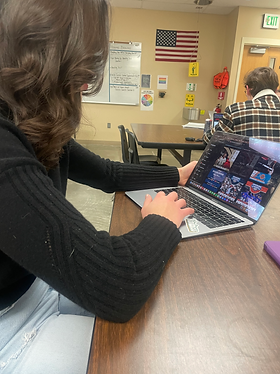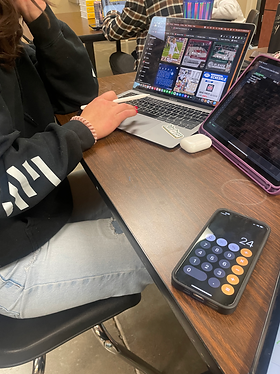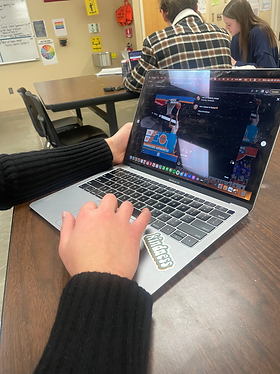Lorenz AP Research Project
Blog #2-
Continuing the adventure...
Just a reminder that as I talked about in my first blog post, my process begins with me collecting all the instagram posts I will be coding for. After my collection process I will then begin coding for specific content pieces such as gender of post, sport displayed, and amount of comments and likes. My eventual goal is to compare the different college conferences and analyze to see whether female or male athletes are represented more. If you head back to my first blog post you can get a little more information, however this is just. a little recap for you. :)
Context: The Academic Conversation
My project will contribute to both the knowledge of equality within college sports, and the representation of female and male college athletes within current media ( specifically Instagram). Equality within intercollegiate sports has been significantly increased since 1972 with the passing of Title IX, which "prohibits any discrimination based on sex in education programs that receive federal money". Since the passing of Title IX in 1972, the number of women in college sports has increased significantly, however the lines blur when looking at if equality remains in representation in the media. Even in current professional sports many female athletes feel underrepresented in even ESPN or SportCenter. Additionally, when female athletes are presented in the media for their sports, female athletes are sexualized and looked at not for their athletic ability. Therefore, specifically looking at college athletics and understanding how NCAA conferences' represent their athletes will help to understand if inequalities still exist through media coverage. Instagram is an important media source to look into because of its relevancy and worldwide impact.
Gap: Contributing to Academic Conversation
The primary gap in academic research that will be further evaluated in this paper is looking at the difference between male and female collegiate athletes representation on specifically the Power Five Conference Instagram accounts in particular. An article by main author Johnson in the academic journal, The International Journal of Communications and Sport, this article analyzes the media representation of NCAA division 1 athletes, specifically from athletic departments' Instagram accounts. This source analyzed each post for a picture of either male or female athletes to determine whether male and female athlete representation was equal. The gap here is that this source looked overly specific into schools rather than broader into specific athletic conferences where inequalities between athletes are even more apparent, for example, in power five conferences such as the SEC and ACC. On the other side, academic sources have looked into more professional athletes, specifically the differences between athletes and their self-presentation on Instagram. Smith and Sanderson's article from the Journal of Broadcasting and Electronic Media analyzes the differences between athletes and how they represent themselves on social media. Specifically, this article looked into the difference between males and females using Goffman's Theory of Work. The gap in the understanding of this source is that it looked into the self-presentation of athletes, meaning this source specifically analyzed athletes' personal Instagram accounts and how they represented themselves. Hence, this study will focus on how college athletes are represented and not how they present themselves on Instagram.
Additionally, this source, and many others I found similar to this one, look into individual high-end professional athletes, not NCAA division 1 athletes. Other studies have been done to see the differences between male and female representation in the media, such as ESPN and ESPNW; however, college athletes have yet to look into Instagram. Wolter's article from The International Journal of Communications and Sports analyzes media from the ESPNW platform and how women are displayed. However, this study doesn't compare to male athletes' representation, and the article only looks into ESPNW. In another academic paper, "Changing the Game: A Critical Media Analysis of ESPN and espnW”, from the academic journal database from the University of Windsor, analyzes and compares the media from ESPN and ESPNW. However, the gap in this study holds the same as the media analysis does not look into college athletics specifically, and the article needs to utilize Instagram as an SMP for data collection. Overall, current research has not had a specific focus on the power five conferences and how they represent their collegiate athletes, which is what this study looks to investigate.

These Images display how each conference Instagram Account Looks...
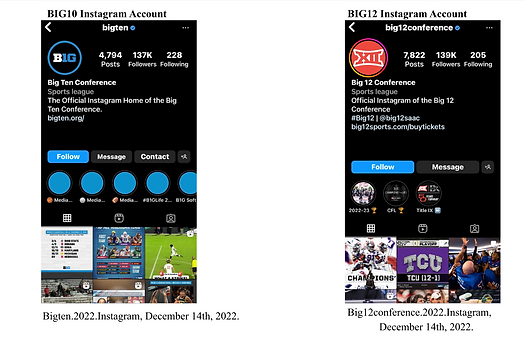
Process: Method to Success
My process begins with instagram posts randomly generated were selected from the same timeline, July 1, 2021- June 30, 2022. The instagram posts were then stratified before random selection as well to ensure all seasons of sports had an equal chance of being represented in the post. In college sports, the amount of posts is heavily seasonal depending on the sport in the specific season. In order to do this, I had to scroll through each college conference instagram account to the time period, and save every post within the time period into a specific collection on Instagram. After I did this for each college conference instagram account: SEC, ACC, BIG10, BIG12, and PAC-12, I then could begin stratifying my posts. After, I randomly generated 10% of all the posts from each instagram account time period( 10% in order to be generalized to the population of all instagram posts) I then began the coding process. For the coding process for the Instagram posts, each post will be carefully coded for image and post content.
The parameters for coding were established before the coding process. For each post, the school of the post, the sport the image is promoting, whether the image is promoting men's or women's sports, the gender of the photo subject( ethnicity if athlete shown) current or alumni athlete, whether the photo is taken during the field of play, whether the post is a call to action, and whether the post contains to an athlete at all and is just a graphic or logo will be recorded. These coding requirements from Johnson's study from the International Journal of Communication and Sports which chose these coding requirements because the content can be measured on what is represented more. This process of how I did the random generator process can be seen below.

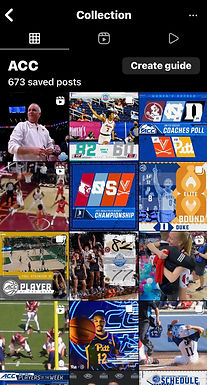
The image on the left displays what the ACC Conference collection of posts looks like from July 1st 2021- June 30th 2022
The image on the right displays how my instagram account arranges my saved posts for me based on the conference instagram
Progress: Where Am I Now?
So far, I have coded thoroughly the SEC, ACC, and PAC-12 Conference randomly generated instagram posts thoroughly. I am hoping to have coded the rest of the conference instagram posts and have them done by the end of February in order for me to start my statistical analysis process. For each instagram post, I use a spreadsheet to keep track of what content is displayed. For example, if an instagram post represents a female athlete, I will check that off in my data collection spreadsheet. After all my posts have been thoroughly coded, I will then make graphs and data tables to show if there is a difference in the representation of male and female collegiate athletes across the different college conferences.
What is Going Well?
The parameters I have set up for the coding process haven been extremely helpful to simply code the post, and eliminate my personally bias, as my coding process is very objective. Additionally, the instagram collection feature has been working very well to keep the instagram posts organized, and so they can be very simply counted and put through a random number generator. Finally, I am glad that I only coded the still image posts, as I have realized that the videos and moving image posts would have been harder to code, and a lot more time consuming.
What is Challenging?
The most challenging part throughout this process has been how tedious the collection of instagram posts have been. For one, its has been extremely difficult to work around the school wifi to access instagram, therefore much of my research and coding posts has been done outside of class. As well, these conference instagram accounts have thousands of posts, hence scrolling to the correct time period itself has taken me hours to save every post in that section. Overall, the generation of posts have been to most difficult, but now it is smooth sailing. :)
Stay Tuned for upcoming information on my research journey...
